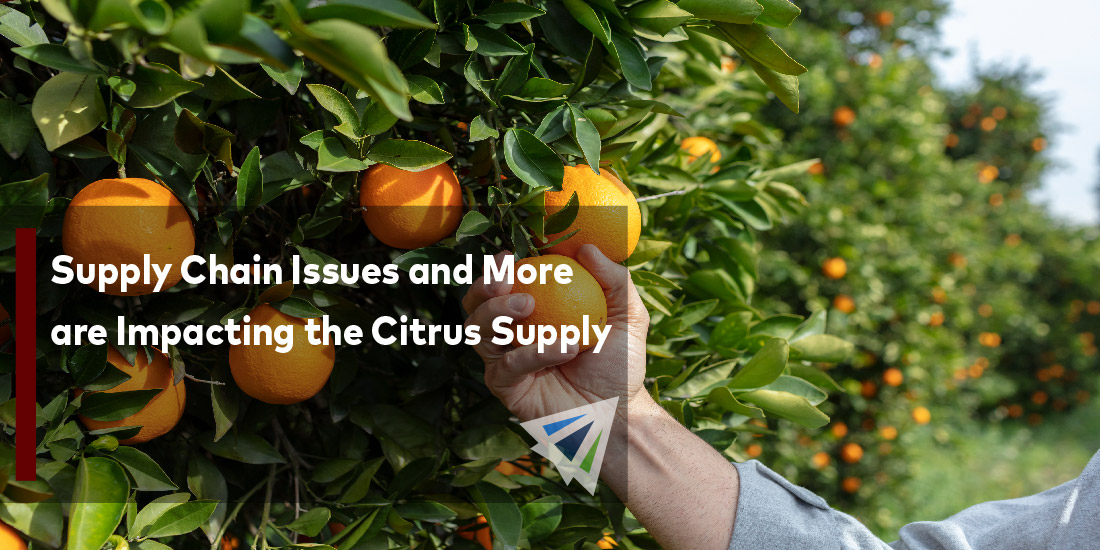Supply Chain Issues and More are Impacting the Citrus Supply
The prices for food have been reaching high monthly gains since April 2020, when the pandemic first took off. These price jumps are coming after a continued strenuous growing season for farmers in several states including Florida, California, and Texas – after weather challenges and citrus greening disease have caused issues.
Take a look as we explore the price increases, weather, and supply chain challenges that are impacting the citrus supply. As well as a preview of what the outlook for the citrus industry looks like in the near future.
Price Increases
In general, overall food prices have been continuing to increase this year. Over the past year, prices for citrus fruits went up a little over 16 percent according to BLS data obtained by Food Dive.
Just in February alone, prices of oranges, tangerines and other citrus varieties rose nearly 7 percent. In mid-January $23USD was the average price for each carton of U.S. oranges, which is up 11 percent from a year ago, reports show.
Weather and Supply Chain Challenges
Weather has played a crucial role in the difficult growing season for several farmers. In Texas the historic winter storm in February 2021 caused significant damage to many of Texas’ growing citrus trees in the Rio Grande Valley.
In addition, a disease known as citrus greening has infested a significant amount of orange trees in Florida, with the state on pace for its smallest orange crop since World War II, reports the Dallas Morning News.
Citrus Greening has no cure and it impacts the quality of the fruit, making it grow smaller as well as having higher acidity and lower sugar content – Supply Chain Drive reports.
Because of this disease, the Florida orange industry will not get back to normalcy in a year, but instead could take up to a decade, one expert says. His reasoning is they need to plant HLB-resistant trees in the ground, which take 3-4 years to grow fruit.
The supply chain issues have also impacted the citrus industry, just like everyone else. Emily Ayala, who is the owner and vice president of Friend’s Ranches Inc. in California says farmers in her area had to dump nearly 10 percent of their oranges that they were unable to bring to the market, because of the supply chain issues, reports NBC News. Emily goes on to tell NBC News that they were, “literally dumping fruit onto the ground that was perfectly good to eat, because we couldn’t find the transportation and labor to move it.”
The Outlook for the Near Future
Consumer demand continues to remain strong for citrus fruit and has been throughout the pandemic. In addition, the outlook for orange juice is expected to grow as well – with an annual growth rate of 2.35 percent up until 2025. Brazil and Mexico are two countries that will continue to have higher production levels whereas the U.S. and European Union production levels are predicted to hit some declines.
Unfortunately, because of the citrus greening disease and the weather challenges this past year, many experts and growers in the U.S. are predicting a lower crop yield this year. Many growers and other stakeholders involved in this industry understand the importance of the high production costs, labor issues and imports and say they need to continue to be addressed.
If you would like more information regarding this topic, contact our team at InterlogUSA and we will be happy to assist you on any questions or comments you may have! In addition, we have our weekly market updates that can provide you with relevant freight news, updates, developments across the industry, and more.
